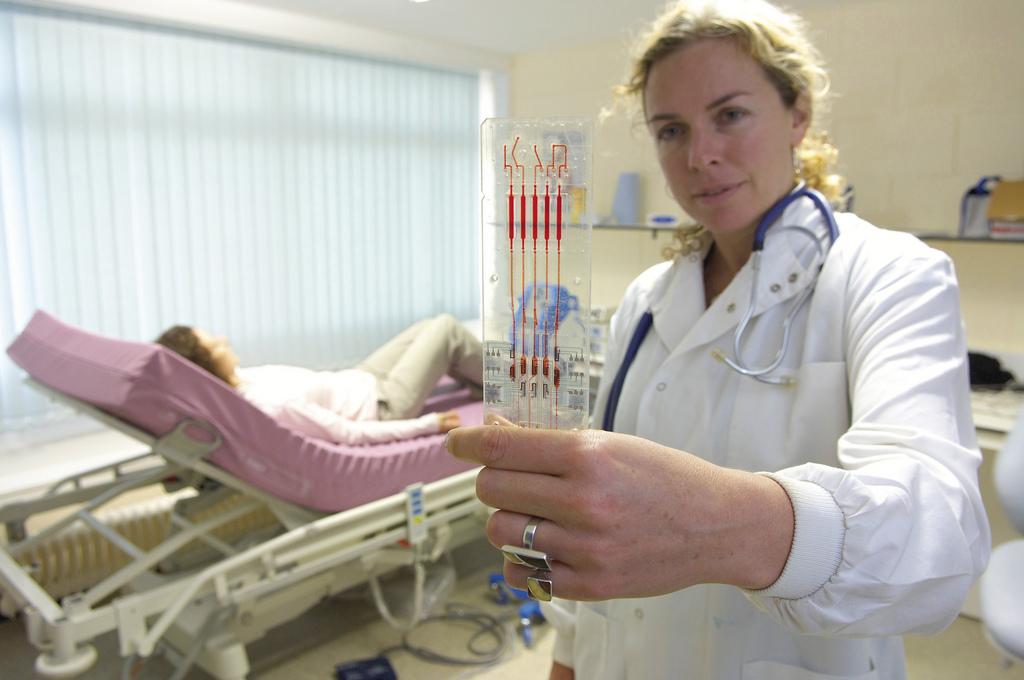Cancer, irrespective of its type, is one of the deadly diseases challenging mankind. Despite a lot of research and billions of dollars spent, cancer is continuing to be one of the leading causes of death throughout the world.
Among various types of cancers that affect women, ovarian cancer causes 3% of cancers among women. They lead to more deaths than any other cancer of female reproductive system. Current research indicates this starts in the fallopian tubes and spreads to the ovaries.
What is ovarian cancer?
Ovarian cancer attacks ovaries. Ovaries are reproductive glands in women. Ovaries produce eggs for reproduction. With one ovary both sides of the pelvis, they also produce female hormones’ of ovarian cancers? Tumors could develop in either of 3 cells of Ovaries.
Epithelial tumors are more common. It starts with cells that cover the outer surface of the ovary. Germ cell tumors are from the egg-producing cells. Stromal tumors begin in structural tissue cells that produce the female hormones’ estrogen and progesterone.
Symptoms of ovarian cancer include:
– Pain in your pelvis
– Frequent bloating.
– Trouble eating or feeling full quickly.
– Urinary problems like the urgent need to urinate or increase in the frequency of urinating.
– Fatigue, indigestion, changes in menstrual cycles, etc.
Many healthy women too may experience these symptoms, but ovarian cancer symptoms have a pattern. The symptoms persist every day, start suddenly, and feel different from your normal digestive and menstrual problems. If you find the above pattern for 2 or 3 weeks, then it could be a sign to visit your doctor.
Risk factors:
Family history is one of the most important risk factors apart from Obesity & age. The chance of developing ovarian cancer is higher if a close relative has or had ovarian, colon or breast cancer.
It is inherited through BRCA1 & 2 gene mutations, which are linked to breast cancer. Genetic inheritance accounts for 10% of its occurrence.
Diagnosis:
1) blood test for elevated levels of a protein called CA-125.
2) The other is an ultrasound of the ovaries coupled with biopsy.
OVA1 test helps in detecting the tumors by measuring levels of 4 proteins in the blood. These proteins together can help in categorizing the tumors as low risk or high risk.
This test is not for screening but indicates that High-risk individuals are more likely to have cancer.
Prognosis and treatment:
Prognosis usually depends on type and stage of ovarian cancer along with the time of its detection. Ovarian cancer five-year relative survival rates range from 89% to 18% for epithelial ovarian cancer, For LMP tumors, it ranges from 99% to 77%.
Treatments include surgery, radiation, chemotherapy and advanced targeted therapies. As per latest research, the FDA has granted orphan drug status to a vaccine TPIV200 for Ovarian Cancer. This announcement was made by Tapimmune.
In essence, ovarian cancer like any other cancer needs to be detected early for better prognosis. However, there are advancements made in technologies for diagnosis as well as for treatment, which gives hope.
Despite the advancements in treatment, always prevention is better than cure hence taking care of health with good diet, healthy living habits and awareness to detect the symptoms go a long way in avoiding diseases.
Sourced from: Alot
Photo by Hey Paul Studios / CC by
Posted on May 22, 2023


